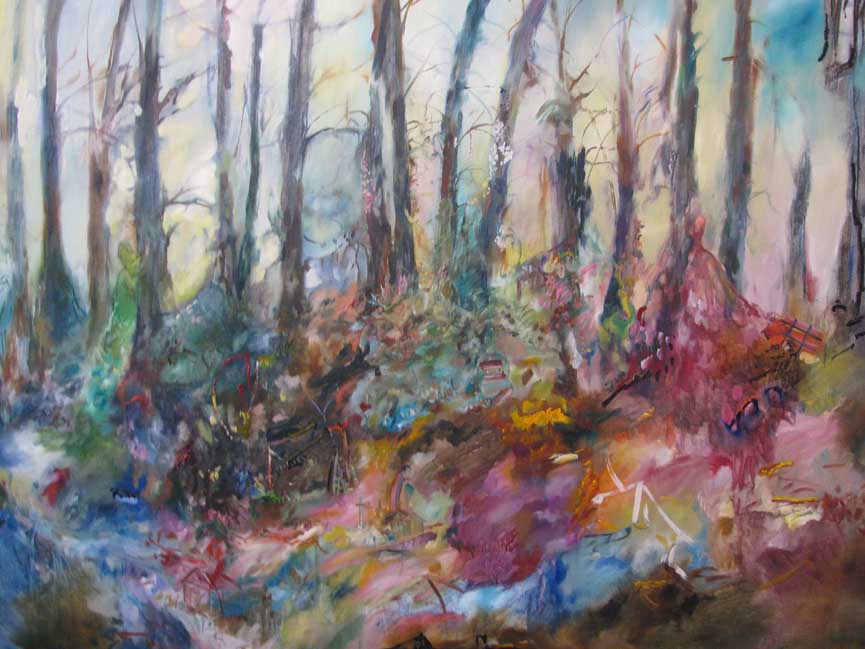 Melanie Rocan “Secrets” 2011, oil on canvas. 60 x 84 inches
Melanie Rocan “Secrets” 2011, oil on canvas. 60 x 84 inches
October 14 – November 12, 2011
Opening: Friday, October 14, 7-10pm
Janet Morton and Mélanie Rocan will be present.
Paul Petro Contemporary Art
980 Queen St West
Toronto, ON M6J 1H1
Tel: 416-979-7874
info@paulpetro.com
www.paulpetro.com
Hours: Wed – Sat: 11–5
Paul Petro Contemporary Art is pleased to present Crossing Natures, a group exhibition that explores a lineage in contemporary Canadian art originating in the work of Joyce Wieland (1931-1998) and found in the work of two younger generations of Canadian artists, Janet Morton and Mélanie Rocan. We are also pleased to present a painting from 1948 by Yvonne Housser (1897-1996) that embodies the spirit of this exhibition.
Crossing Natures looks at the idea of thresholds, or liminal spaces, that convey aspects of our relationship to Nature. The exhibition also considers cross-generational influences and affinities.
From Nell Tenhaaf’s text, Soft in the Head, August 2011:
“The American ecofeminist Carolyn Merchant had published her landmark book The Death of Nature eight years earlier […] Merchant’s contribution to philosophy was to have a far-reaching influence and prove itself visionary in articulating how we have tamed, managed, objectified, atomized, and rationalized Nature […] Today it matters less which gender is responsible for the ever more rapid disappearance of Nature as a powerful and compelling force. It seems more important to reclaim that power in any way that we can.
For this reason it is striking to see in Mélanie Rocan’s very recent painting Secrets images of being united with nature in the form of rituals that are definitely pagan and probably also pantheistic, invoking redemption through immersing in and conjoining with the natural world. And in Janet Morton’s She’s Come Undone the suggested ability to put back together what has come almost, but not entirely, asunder is as comforting as the pile of wool heaped on the floor. Interestingly, each of these artists leans toward abstraction in her own way. Rocan buries her figures within brushstrokes that speak to the Abstract Expressionists’ mantra of locating truthful experience in the paint itself, as both surface and gesture. Morton invokes AbEx painterly power in a similar way, for the authenticity of its rebellious energy…
[With] Wieland’s large floppy painting, it seems to be asking how it is possible to still (even at that time) enter nature. And it proffers some answers to the question: by bird, by canoe, by identifying with the knowledge of aboriginals, by all of these intertwined […] This painting is so gloriously soft in the head in the face of a Nature that has been hyper-rationalized, that it has to have the last word.”
